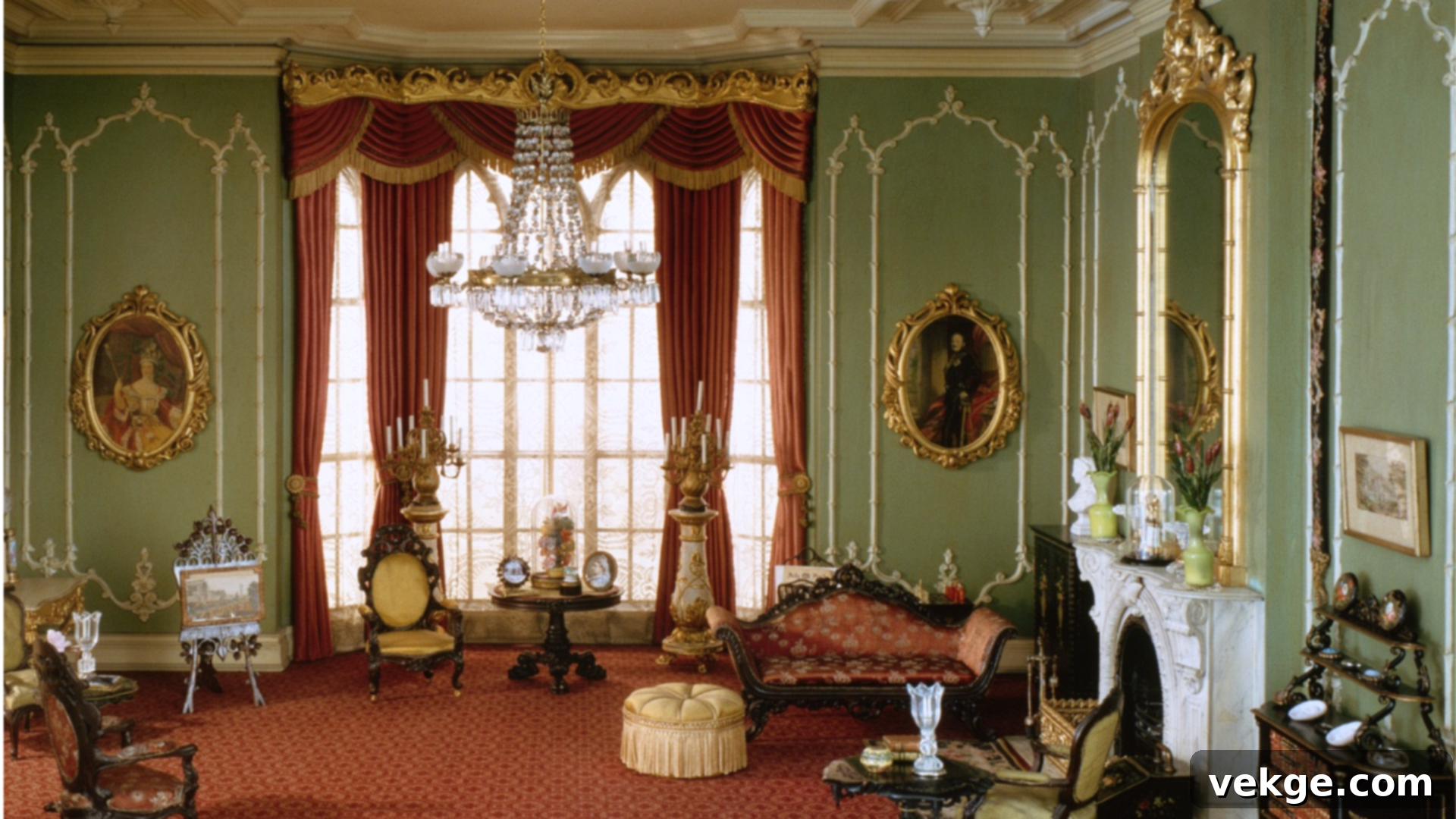Timeless Elegance: How to Integrate Victorian Drawing Room Style into Your Modern Home
Imagine stepping into a room that effortlessly marries the grandeur of the past with the comfort of the present. A Victorian drawing room, once the heart of social life in 19th-century homes, offers just such a captivating blend. These elegant spaces, where families gathered for conversation, reading, and displaying their cherished possessions, possessed a unique charm that can still inspire breathtaking interiors today.
Far from being a relic of the past, the core principles of Victorian design — a focus on intricate details, luxurious materials, and a curated aesthetic — can be artfully adapted to contemporary living. This article delves into the distinguishing features that made Victorian drawing rooms truly special, from their soaring ceilings to their sumptuous rugs, and provides actionable insights on how to infuse this timeless elegance into your modern home without making it feel outdated.
Prepare to transform your living space into a sophisticated sanctuary, a harmonious blend of historical richness and modern functionality that reflects your unique taste and creates an inviting atmosphere for both family and guests.
Key Characteristics of a Victorian Drawing Room
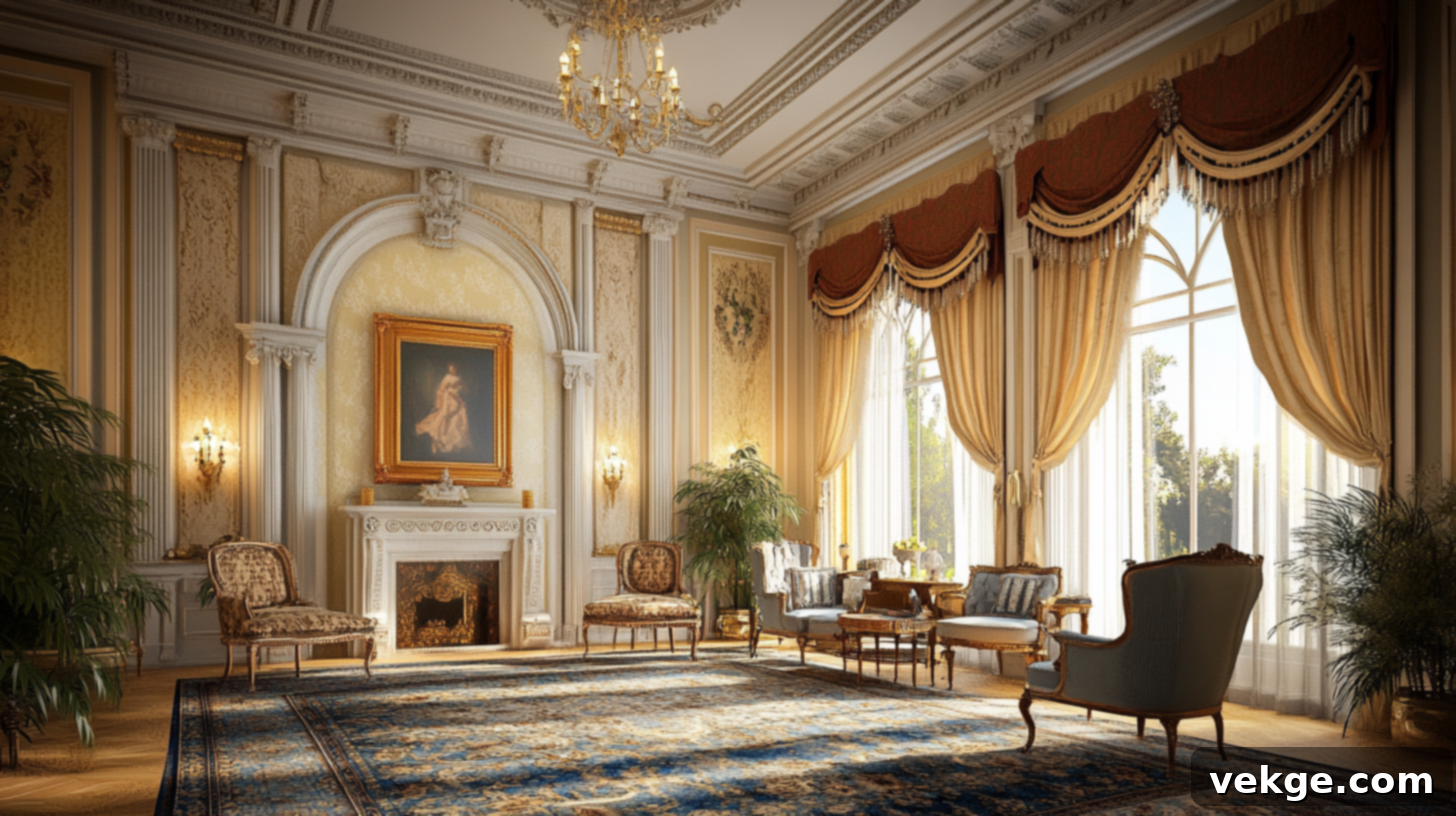
The Victorian drawing room, a quintessential reflection of 19th-century domestic life, presented a distinct aesthetic that continues to captivate design enthusiasts. These rooms were meticulously crafted to showcase the homeowner’s style, social standing, and appreciation for beauty, characterized by elaborate detailing, rich materials, and a profoundly warm, yet formal, ambiance.
Architecture and Layout: Grandeur and Purpose
A hallmark of Victorian architecture was its commitment to creating a sense of grandeur. Drawing rooms frequently boasted impressive tall ceilings, which not only added an airy openness to the space but also provided ample room for ornate light fixtures and decorative plasterwork. Large windows, often bay or sash, were integral to these rooms, allowing an abundance of natural light to flood the interior. These windows were typically adorned with heavy, layered window coverings that added to the room’s luxurious feel and offered privacy.
Intricate trim work, including elaborate cornices, picture rails, and decorative architraves around doors and windows, added a sophisticated layer of detail. The layout of Victorian drawing rooms was designed for social interaction. Furniture was often arranged in conversational groupings rather than simply pushed against the walls. Armchairs, chaise lounges, and small sofas were strategically placed to encourage intimate discussions, with occasional tables readily available for serving tea or holding books. This thoughtful arrangement made the drawing room a perfect venue for small gatherings, afternoon tea, and refined social visits, ensuring comfort and elegance in equal measure.
Furniture and Upholstery: Ornate Comfort
Victorian furniture is instantly recognizable for its elaborate wood carving, elegant curves, and substantial presence. Pieces were typically crafted from dark, rich woods such as mahogany, walnut, and rosewood, often featuring intricate scrollwork, turned legs, and decorative inlays. Seating, including plush sofas and armchairs, was designed for both comfort and visual appeal, characterized by deep button tufting, rolled arms, and generously stuffed cushions.
The upholstery fabrics were equally opulent, chosen for their luxurious texture and rich appearance. Velvet, silk, damask, and brocade were common choices, often adorned with fringe, tassels, and braided trim that enhanced their lavish look. Beyond seating, drawing rooms featured an array of functional yet decorative pieces: delicate side tables, small writing desks, and display cabinets (often called curio cabinets) filled with collectibles. Each piece was a testament to superb craftsmanship, built to last and to elegantly convey the owner’s sophisticated taste and appreciation for fine artistry.
Color Palette and Wall Treatments: A Canvas of Richness
Victorian interiors were celebrated for their bold, deep, and often complex color schemes, a stark contrast to today’s more minimalist trends. Instead of light neutrals, Victorians embraced rich jewel tones such as deep burgundy, forest green, sapphire blue, ruby red, and regal purple. These vibrant colors enveloped the room, creating an atmosphere of warmth, intimacy, and undeniable luxury. The choice of such intense colors reflected the era’s taste for drama and grandeur.
Walls were rarely left plain; they served as a canvas for elaborate decoration. Patterned wallpapers featuring intricate floral motifs, damasks, stripes, or even pictorial scenes were immensely popular, adding texture and visual interest. Some homes opted for painted walls enhanced with decorative techniques like stenciling, trompe l’oeil, or faux finishes to mimic expensive materials. Thick, layered curtains, often made from heavy velvet or brocade, hung at the windows, frequently held back with ornate tie-backs. This meticulous layering of colors, patterns, and textures created a cohesive and opulent space, making the Victorian drawing room a truly unique and inviting environment for family and esteemed guests.
Victorian Drawing Room Decor Elements
Beyond the structural and furniture choices, Victorian drawing rooms were brought to life by a multitude of carefully selected decorative items. These objects weren’t just for show; they contributed significantly to the room’s overall warmth and lived-in feel, while adhering to the aesthetic principles of the era. Each accessory told a story, often reflecting the family’s travels, interests, and social standing.
Lighting and Chandeliers: Illuminating Opulence
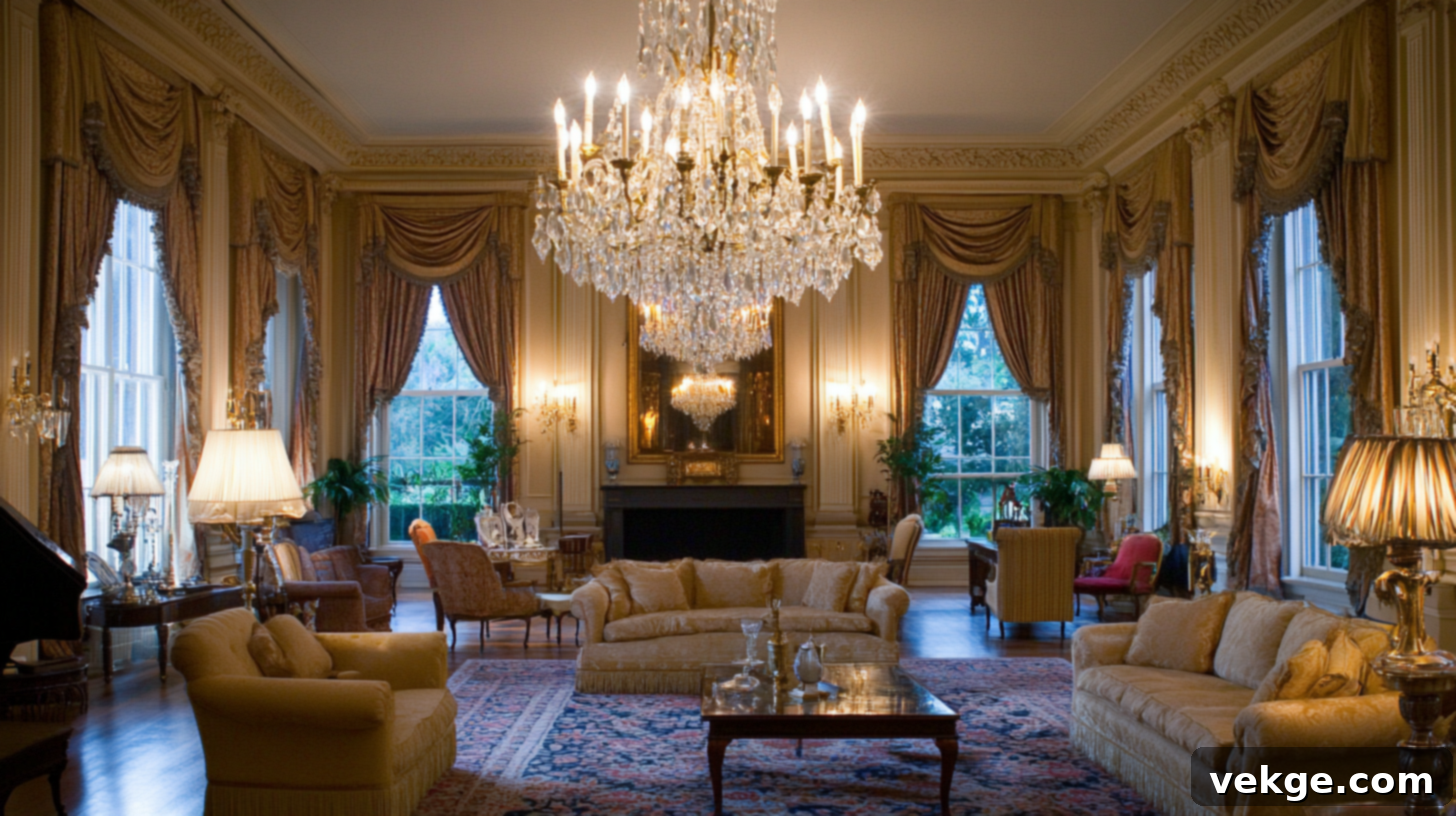
Lighting was a pivotal element in Victorian drawing rooms, serving both a functional and highly decorative purpose. Grand chandeliers, often featuring cascades of crystal drops, were central fixtures that caught and dispersed light, creating a dazzling effect. Beyond these magnificent ceiling lights, wall-mounted gas lamps (and later, early electric fixtures) with frosted or etched glass shades provided a softer, ambient glow, perfect for evening conversations and reading.
Candles in ornate candelabras and table lamps (initially oil-fueled, then electric) offered additional, localized illumination, allowing for varying levels of brightness and mood. The strategic placement of windows ensured abundant natural light during the day, which could be controlled by the heavy, layered curtains. This sophisticated mix of natural and artificial light sources created an inviting, warm, and welcoming atmosphere, adaptable to different times of day and social occasions.
Decorative Accessories: Curated Collections
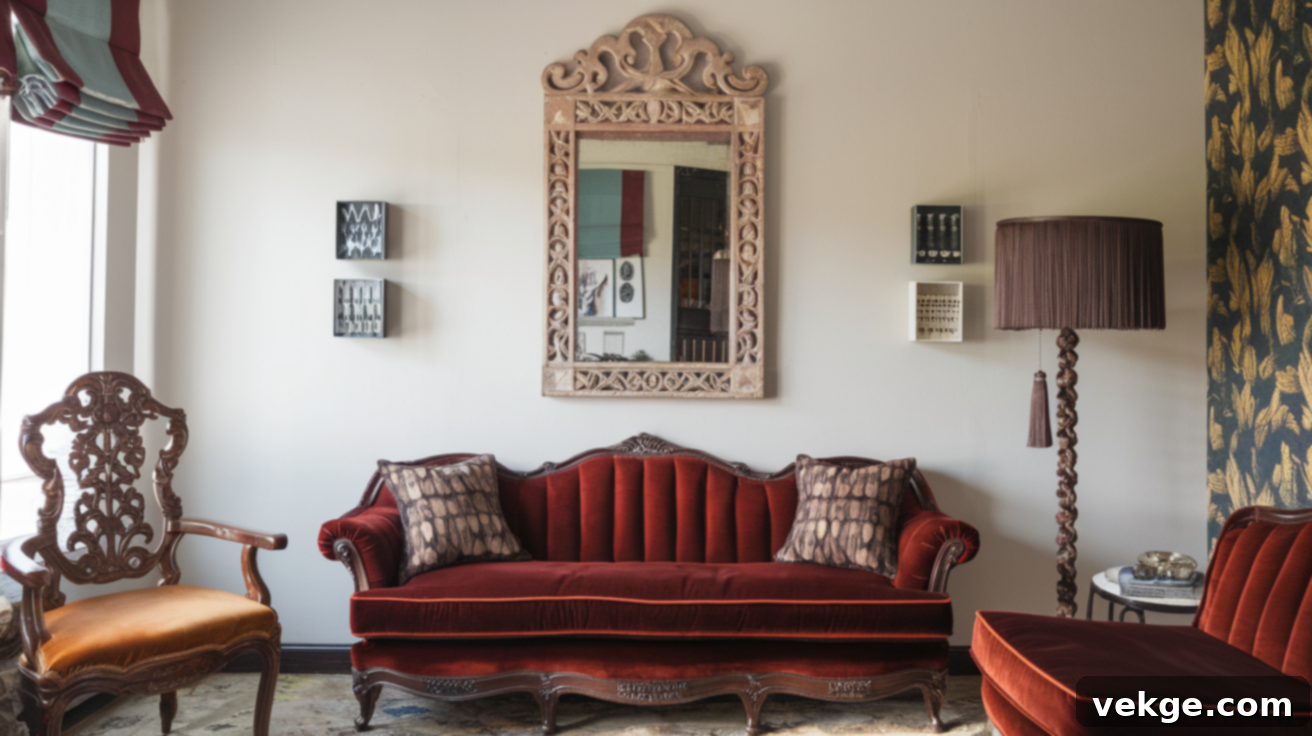
Decorative accessories played a significant role in defining the character of Victorian drawing rooms, often transforming them into showcases of personal taste and worldly possessions. Large, ornate mirrors with gilded or heavily carved frames were common, serving to amplify light and enhance the sense of spaciousness and grandeur. Walls were frequently adorned with framed pictures, often forming elaborate gallery walls featuring family portraits, landscape paintings, or sentimental prints. These art collections reflected the family’s history and cultural interests.
Shelves and tables were laden with an eclectic array of objects: small porcelain figurines, elegant vases, globes, decorative clocks (often focal points on mantelpieces), and glass domes protecting precious items like dried flower arrangements or delicate curios. Indoor plants, particularly ferns and palms, displayed on ornate plant stands, added a touch of living greenery. These meticulously arranged items were more than mere decoration; they were a narrative, offering visitors a glimpse into the family’s travels, hobbies, and social standing, contributing to a truly personalized and lived-in feel.
Flooring and Rugs: Foundation of Comfort and Style
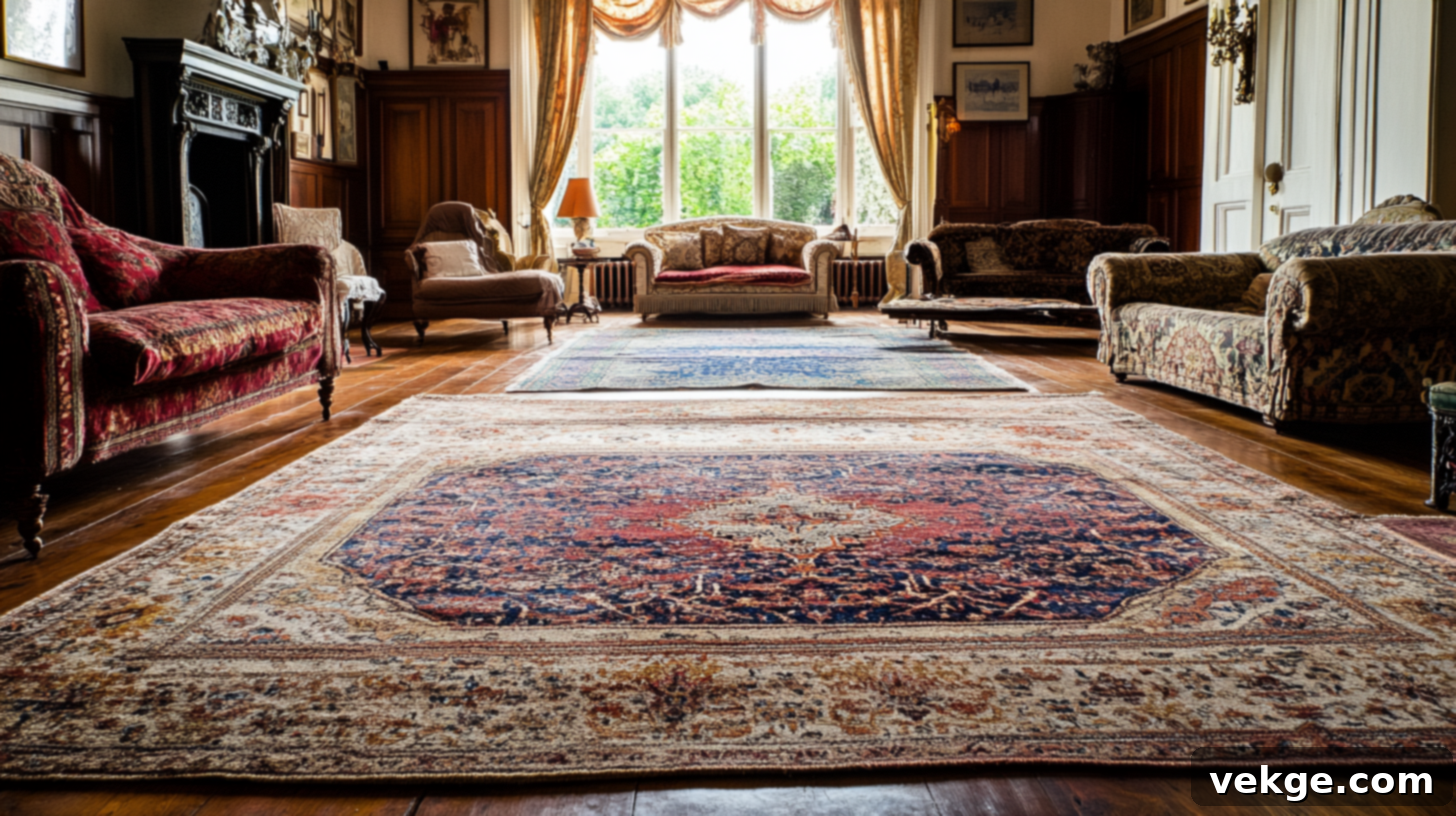
The flooring in Victorian drawing rooms was often a significant design element in itself. Highly polished wooden floors, sometimes laid in elaborate parquetry patterns, provided a rich and durable base. However, these wooden surfaces were rarely left bare. The vast majority of the floor space was typically covered by large, richly patterned rugs, which were central to the room’s comfort and aesthetic.
These rugs, often Oriental or Persian in origin, featured intricate designs with floral motifs, acanthus leaves, and curvilinear patterns, rendered in the characteristic deep, rich colors of the Victorian palette. Smaller accent rugs might be strategically placed in front of fireplaces, sofas, or under key furniture pieces to define zones or add extra warmth. Rugs served multiple practical purposes: they insulated the room, reduced noise, and added significant color, pattern, and texture to the overall design. A well-chosen, high-quality rug was a clear indicator of the family’s wealth and refined taste, often complementing other fabric patterns within the room for a cohesive, sumptuous look.
Incorporating Victorian Style into Modern Homes: A Guide to Eclectic Elegance
Embracing Victorian style in today’s homes isn’t about replicating a museum piece; it’s about artfully blending the enduring charm and opulence of the past with the practicality and comfort of modern living. This approach allows you to create a space that celebrates history while remaining perfectly suited for contemporary life, resulting in an interior that is both unique and deeply inviting.
1. Mixing Victorian Style with Modern Comfort: The Art of Balance

The key to a successful modern Victorian interior lies in achieving a harmonious balance between the old and the new. Start by selecting a few iconic Victorian pieces, such as a beautifully carved wooden armchair or a button-tufted chesterfield sofa, and pair them with more minimalist, clean-lined modern furniture. To enhance comfort, add plush cushions, soft throws, and luxurious blankets to historic wooden pieces. Look for contemporary furniture that subtly echoes Victorian forms—perhaps a sofa with gently rolled arms but streamlined upholstery, or a coffee table with curved legs but a simple, unadorned surface.
This careful curation prevents the room from feeling either too heavy and historical or too sterile and contemporary. Prioritize pieces with good craftsmanship, ensuring they are not only aesthetically pleasing but also durable and comfortable for everyday use. Remember, modern living demands comfort and functionality, so while historical accuracy is admirable, it should not compromise the liveability of your space. The goal is a room that feels both special and genuinely inviting, a curated blend rather than a strict adherence to one era.
2. Color and Accessories: Thoughtful Touches
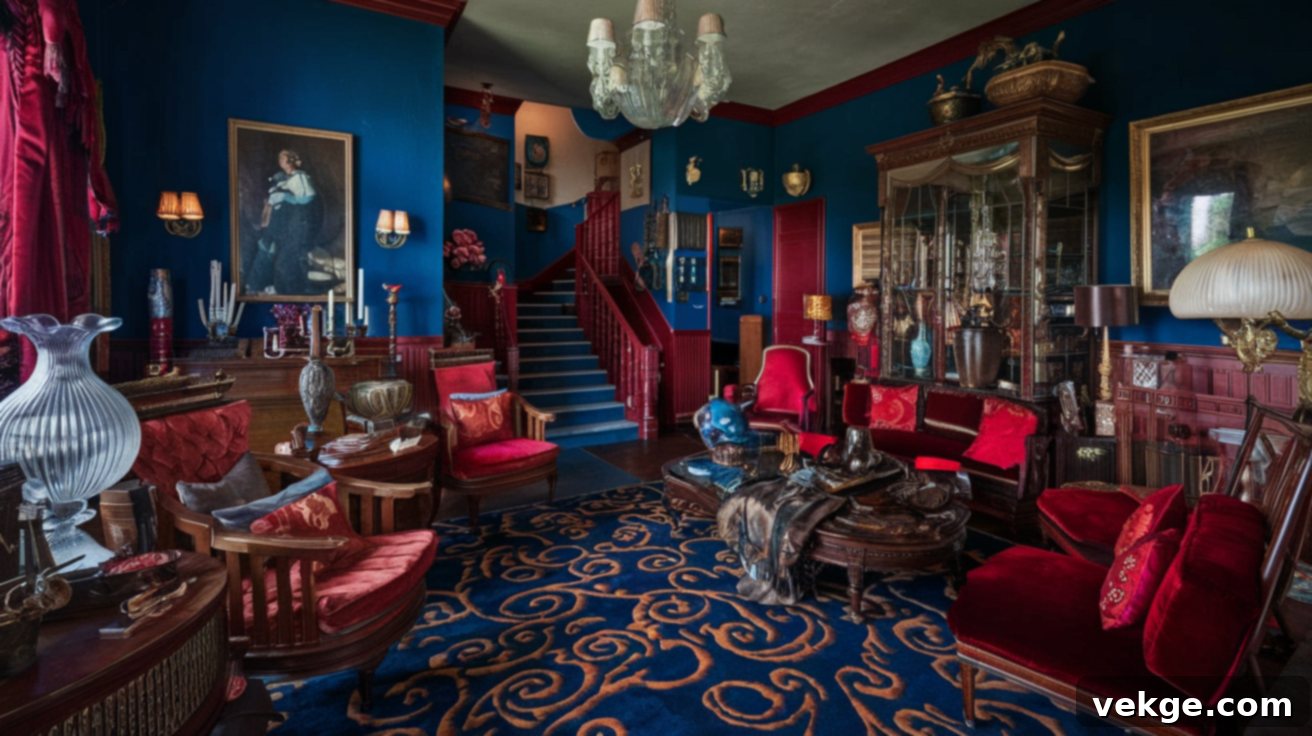
While Victorian rooms famously embraced deep, saturated colors like burgundy, navy, and forest green, a modern interpretation might involve using lighter versions of these hues or employing them strategically as accent colors. Consider painting a single accent wall in a rich jewel tone to create a focal point, contrasting it with more neutral shades on other walls to prevent the room from feeling overwhelming. This approach allows the depth of Victorian color to shine without dominating the entire space.
When it comes to accessories, less is often more. Instead of cluttering every surface, choose a few impactful Victorian-era items to punctuate your modern decor. Think about a vintage mantel clock, a collection of glass paperweights, a beautifully framed antique map, or a gallery wall featuring a mix of old family photos and contemporary art in classic frames. Small brass items, a stack of leather-bound books, or an elegant plant stand with a lush fern can subtly infuse Victorian charm. These carefully selected pieces add character and history without making the room feel heavy or outdated, creating a sophisticated and personalized aesthetic.
3. Modernizing the Victorian Layout: Openness with Definition
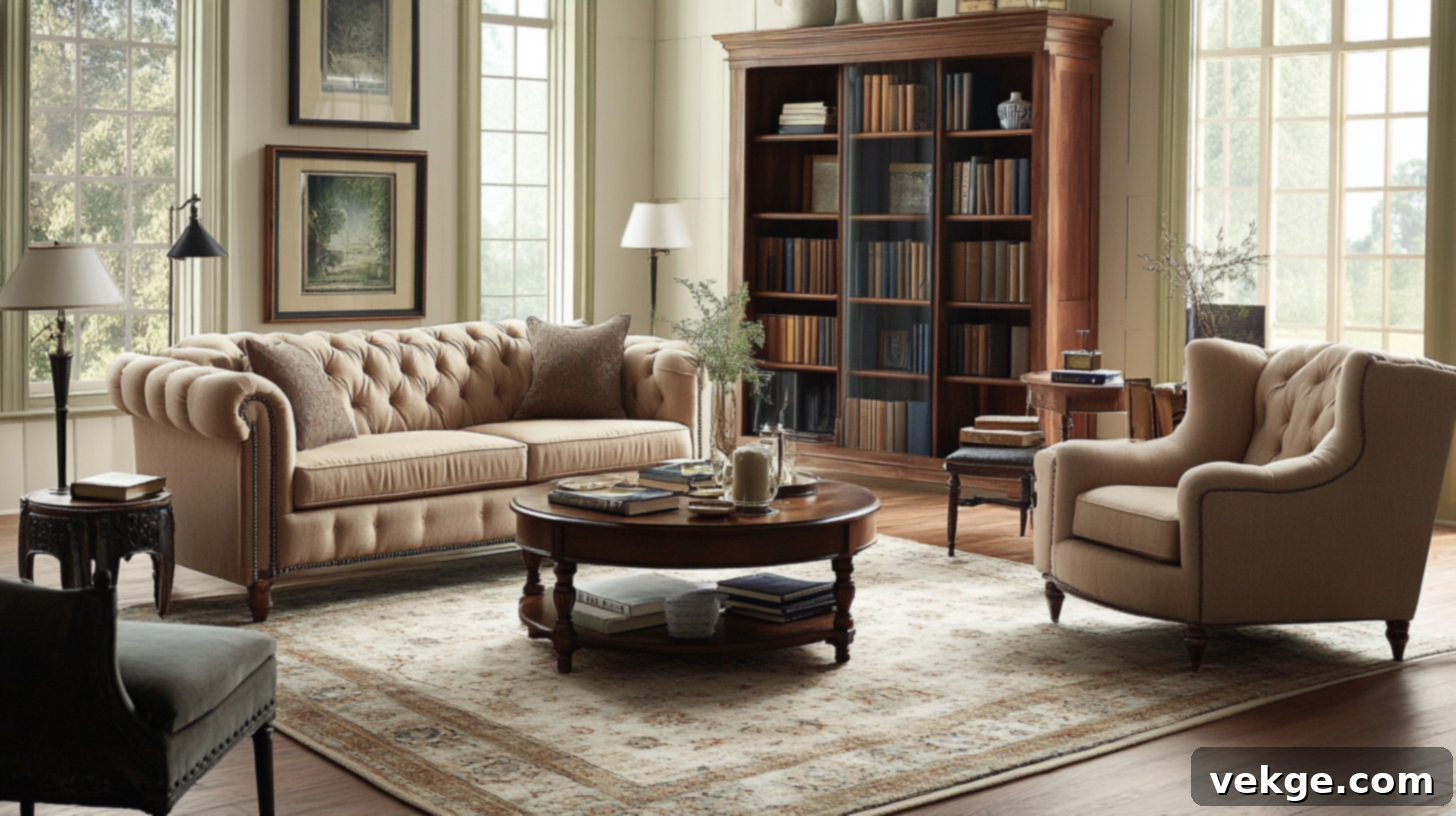
Traditional Victorian homes were characterized by numerous small, distinct rooms, each with a specific function. Modern living, however, often favors open-plan layouts. You can bridge this gap by using clever design strategies that maintain the grand, defined feel of a Victorian room within an open space. Area rugs are excellent tools for delineating different zones in a larger room, such as a seating area, a reading nook, or a dining space, without erecting physical barriers.
When selecting furniture, opt for pieces that echo Victorian shapes but feature cleaner lines and lighter proportions, preventing them from overwhelming an open layout. Arrange seating in intimate clusters to foster conversation and create a sense of cozy enclosure, reminiscent of the original drawing room’s purpose. This approach preserves the inherent charm and sophistication of Victorian style while ensuring the space remains functional and adaptable to contemporary lifestyles. Consider using decorative screens or open bookcases to create soft, permeable divisions when a hint of separation is desired, maintaining visual flow while adding architectural interest.
4. Lighting in a Victorian-Inspired Modern Room: A Luminous Blend
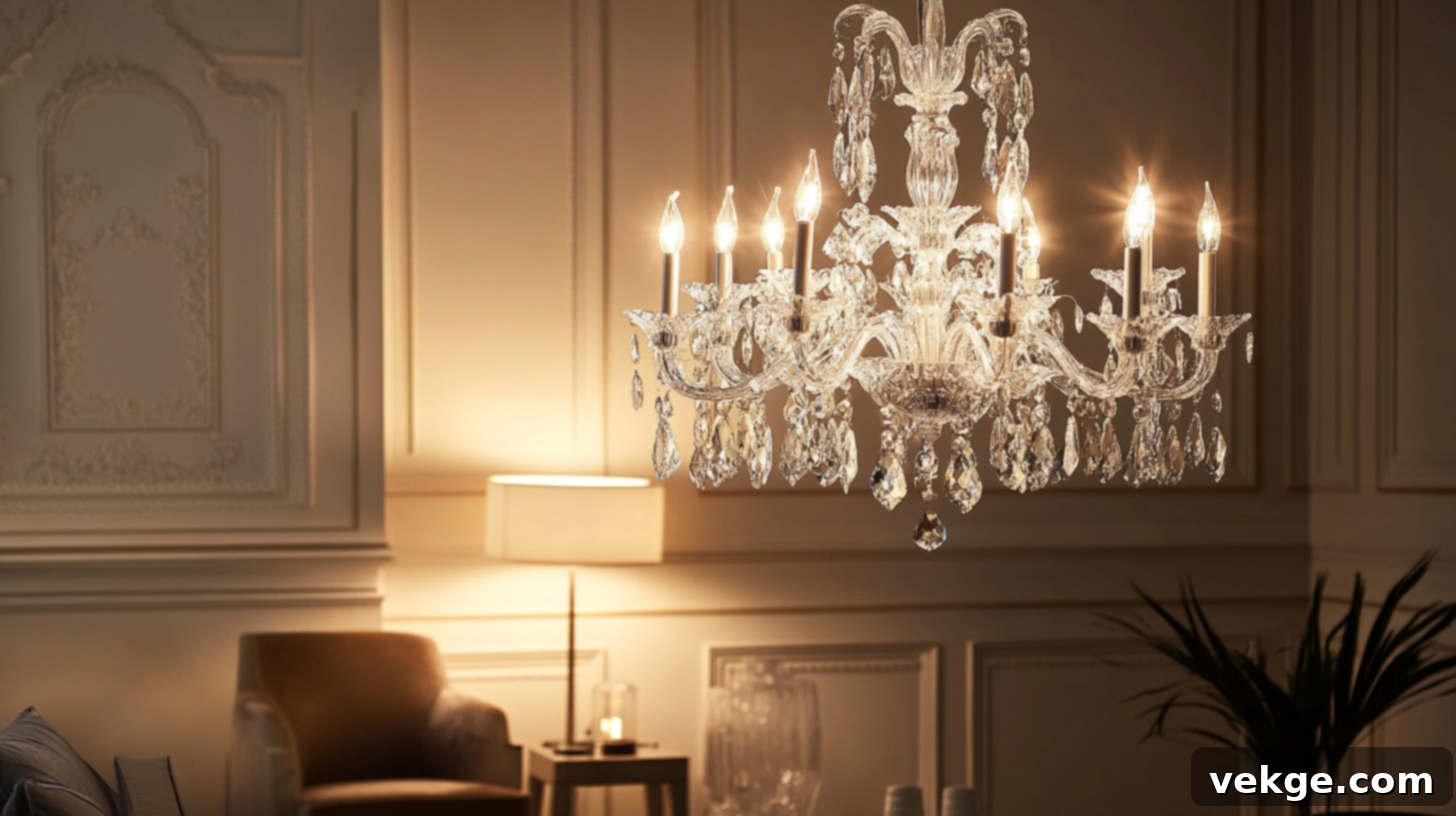
Thoughtful lighting is crucial for bringing warmth and depth to your Victorian-inspired space. The trick is to artfully combine the aesthetic appeal of classic fixtures with the efficiency of modern technology. Introduce a statement chandelier with crystal or glass elements to serve as a central focal point, offering that quintessential Victorian sparkle. Complement this with simpler, more contemporary fixtures in other areas, or select vintage-style lamps updated with energy-efficient LED bulbs.
Layering light sources is key to creating a rich and inviting ambiance. Place table lamps and floor lamps at varying heights throughout the room to generate a soft, multi-directional glow. Wall sconces, either antique reproductions or modern designs with a vintage feel, can add ambient light without consuming precious table space. Integrating smart bulbs allows you to control brightness and mood seamlessly, offering the best of both worlds: timeless aesthetics with cutting-edge convenience. Ensure you also incorporate adequate task lighting for reading or other activities, balancing the decorative with the practical.
5. Combining Traditional and Contemporary Artwork: A Curated Dialogue
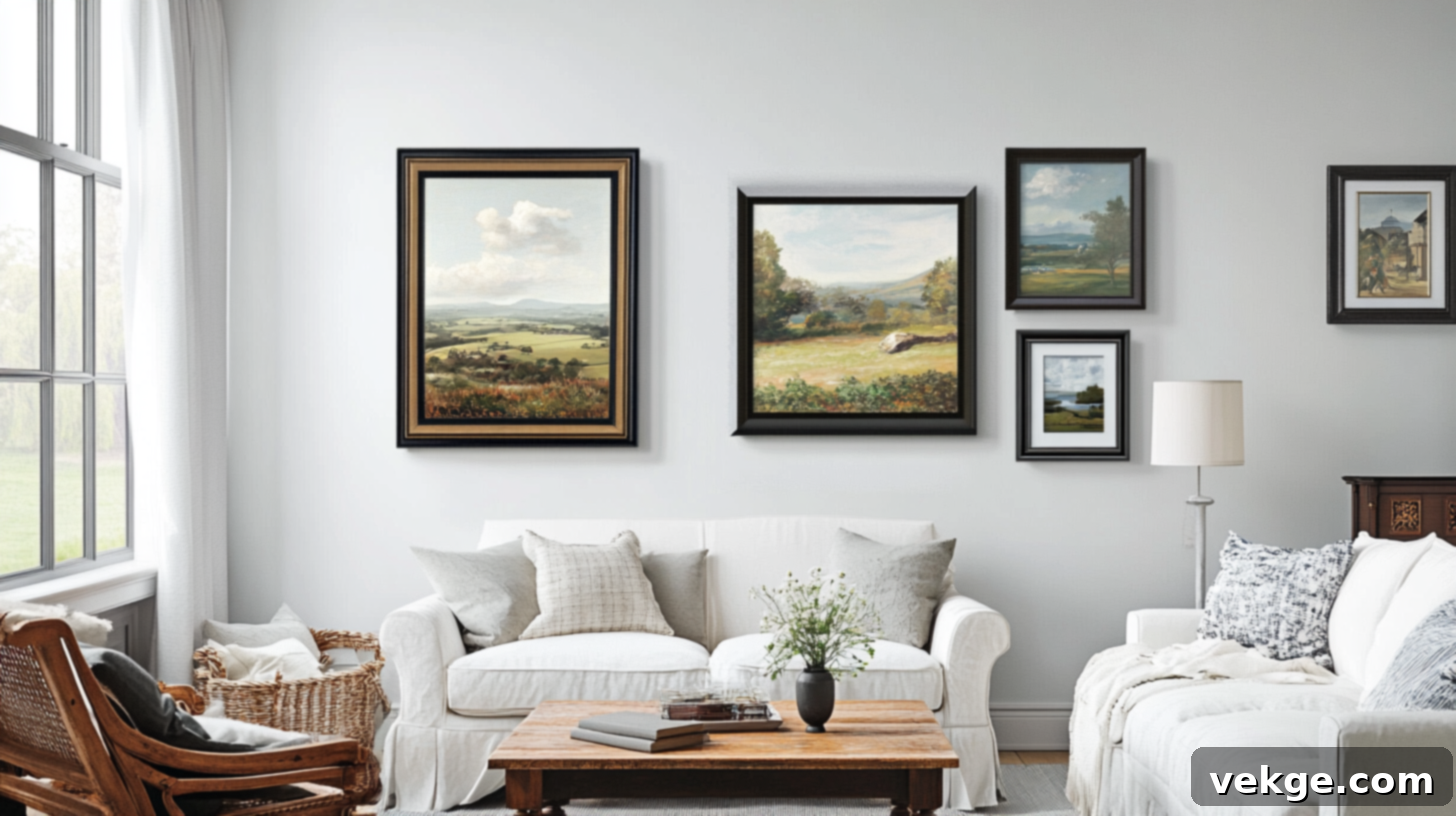
Art provides a powerful opportunity to express your personal style and bridge different eras within your decor. Create compelling visual interest by hanging a classic landscape painting or a framed botanical print alongside a minimalist modern abstract piece. Alternatively, curate a gallery wall that thoughtfully mixes traditional family photographs in ornate frames with contemporary black and white prints or sleek, modern artworks.
The secret to success lies in finding a unifying element, such as a consistent color palette, a common theme, or similar framing styles, to tie the diverse pieces together. This eclectic approach to art adds tremendous depth, personality, and a sense of curated history to your room, making it uniquely yours. Don’t shy away from experimenting with unusual pairings; sometimes the most unexpected combinations create the most striking visual statements. Remember, art is one of the most flexible elements of decor, allowing for easy updates and bold expressions of individuality.
6. Incorporating Victorian Patterns in Modern Fabrics: Subtlety and Sophistication
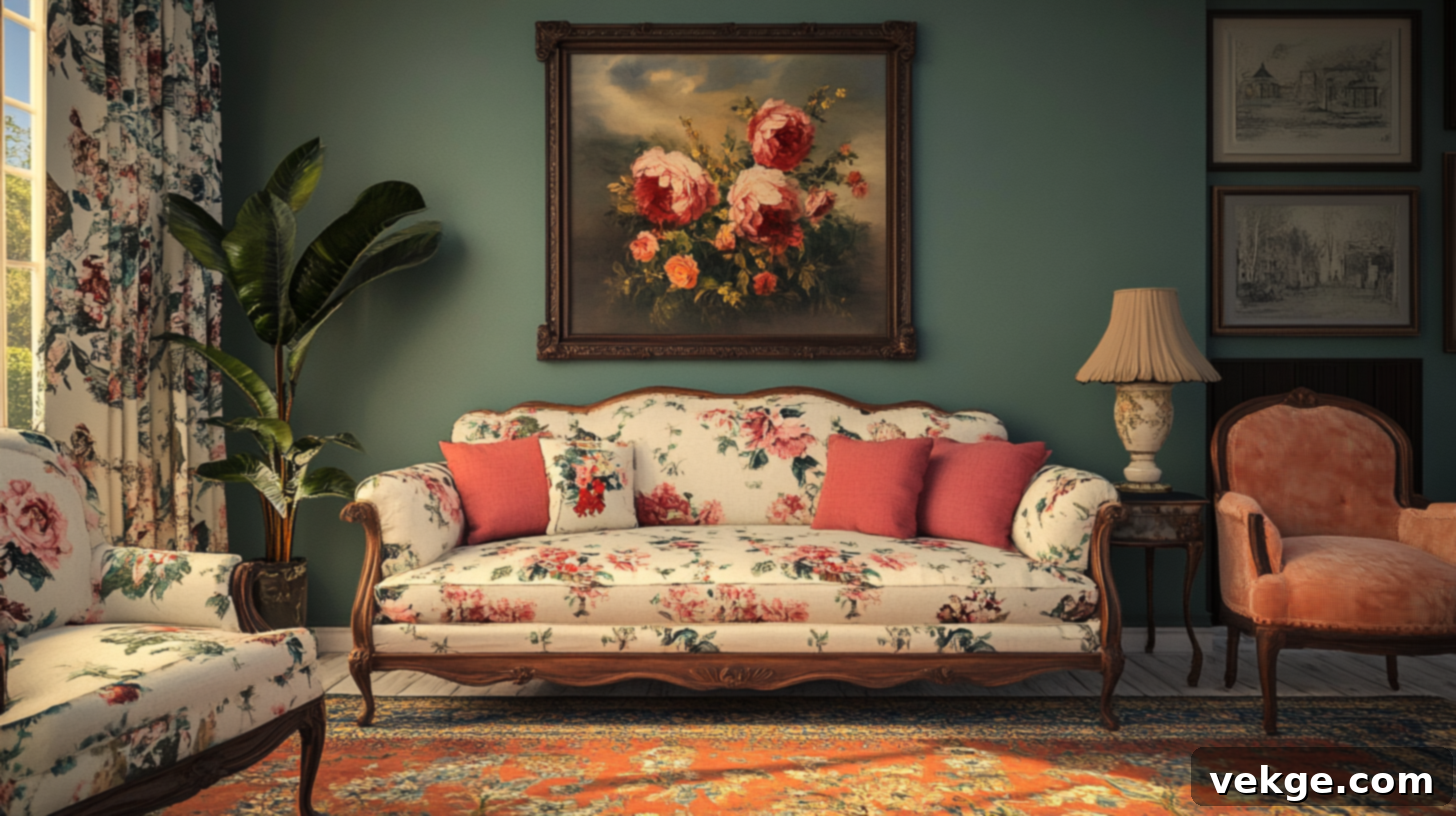
Victorian interiors were renowned for their abundance of patterns, often layering several intricate designs. For a contemporary take, adopt a more restrained approach by selecting just one or two prominent patterns to feature. For instance, a sofa upholstered in a simple, elegant floral print can be beautifully complemented by plain, textured chairs, or vice versa. This method allows the richness of Victorian patterns to be appreciated without overwhelming the senses or making the room feel visually busy.
When choosing fabrics, prioritize those that offer both appealing aesthetics and lasting durability. Introduce smaller touches of pattern through throw pillows, a single accent chair, or even window treatments. Consider modern interpretations of classic Victorian patterns – perhaps a large-scale damask in a contemporary neutral hue, or a delicate floral print reimagined in a fresh, unexpected color palette. This strategic use of pattern imbues your space with the rich, historical texture of Victorian style while ensuring it feels current, sophisticated, and perfectly suited to a modern sensibility. Always consider the scale of the pattern in relation to the size of your room; larger patterns can work well as a focal point, while smaller rooms benefit from fewer, more restrained designs.
Victorian-Inspired Textiles for Modern Homes: A Touch of Luxurious Comfort
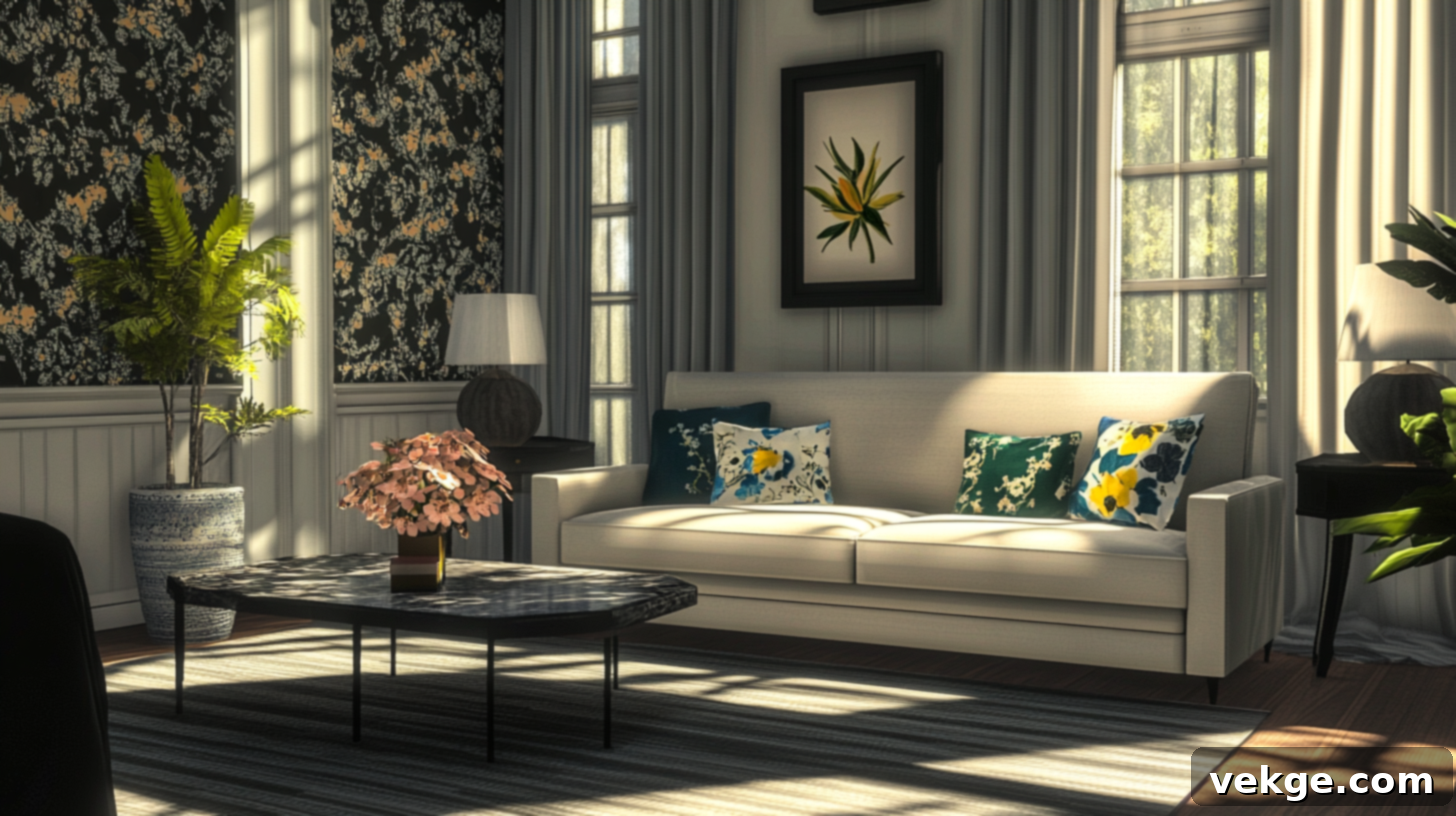
Textiles were fundamental to creating the luxurious and inviting atmosphere of Victorian drawing rooms. Today, you can harness the power of these special fabrics to inject a sense of old-world charm and unparalleled comfort into your contemporary home, ensuring your space feels rich and sophisticated, rather than stuffy or dated.
Choosing Luxurious Fabrics: Tactile Richness
The selection of luxurious fabrics is paramount to capturing the essence of Victorian elegance. Velvets, with their soft pile and rich sheen, are perfect for adding a touch of decadent comfort to armchairs, sofas, or even decorative pillows. Silk, with its subtle luster and fluid drape, can elevate curtains, cushion covers, or lamp shades, bringing a refined sense of light and texture. Brocades and damasks, featuring raised, woven patterns, can transform simple modern furniture into more ornate, special pieces without requiring heavy carving.
You don’t need to swath every surface in heavy, ornate fabrics. Instead, strategically place these opulent textiles. Imagine a single velvet armchair in a rich jewel tone acting as a focal point in a largely minimalist room, or a set of silk curtains framing a window in a clean-lined space. Even small accents, such as a velvet throw pillow or a silk-fringed lampshade, can effectively convey that distinct Victorian feeling. When sourcing, look for modern iterations of these classic fabrics that offer enhanced durability, stain resistance, and ease of cleaning, ensuring they are as practical as they are beautiful.
Using Victorian Patterns in Modern Textiles: Refined Embellishment
Victorian rooms often featured an abundance of layered patterns, creating a complex visual tapestry. In a modern context, it’s wise to approach patterns with more restraint and intention. Integrate specific Victorian patterns—such as elegant florals, classic stripes, or sophisticated damasks—in smaller doses to achieve a refined look. Consider adding floral-patterned throw pillows to a plain sofa, or place a subtly striped rug beneath a modern dining table. These accents provide visual interest and historical depth without overwhelming the space.
Seek out contemporary textiles that interpret traditional Victorian patterns in fresh ways. This might include larger-scale prints, simplified color palettes (e.g., a two-tone floral rather than multi-colored), or unexpected modern hues that complement your existing decor. For example, a classic toile pattern in a soft grey or blue can feel remarkably current. A good design principle is to select one dominant pattern and then pair it with secondary patterns that are either significantly smaller or larger in scale, or textural plain fabrics, to maintain visual harmony and prevent the room from appearing too busy. This careful selection ensures that Victorian patterns contribute to a sophisticated, updated aesthetic.
Conclusion
Infusing your home with the charm of a Victorian drawing room isn’t about rigid historical recreation; it’s about thoughtfully selecting and adapting the best elements of that rich era to suit contemporary living. It’s a journey of discovery that allows you to create a living space truly unique, deeply personal, and brimming with character.
Begin your transformation by introducing small, impactful touches. Perhaps a luxurious velvet pillow, a grand antique-style mirror that reflects light and history, or a curated collection of objects that speak to your interests. Take a fresh look at your current living area and identify where a splash of the past could enhance its present appeal. Consider painting a single wall in a deep, inviting color, or installing a statement lamp that casts a warm, ambient glow, reminiscent of gaslight.
Don’t be afraid to explore local antique shops, flea markets, or online vintage retailers for unique finds. These hidden gems often offer authentic pieces at accessible prices, allowing you to build your collection organically and tell your own story. As you incorporate new elements, take photographs of your progress. This visual diary will not only inspire you but also help you assess how your room is evolving into a harmonious blend of then and now.
The ultimate reward is a space unlike any other—a home that elegantly merges the timeless allure of Victorian design with modern comfort and functionality, crafted uniquely for you and your lifestyle. Which Victorian drawing room idea will you embrace first to begin your journey into timeless elegance? Share your thoughts and plans in the comments section below!
